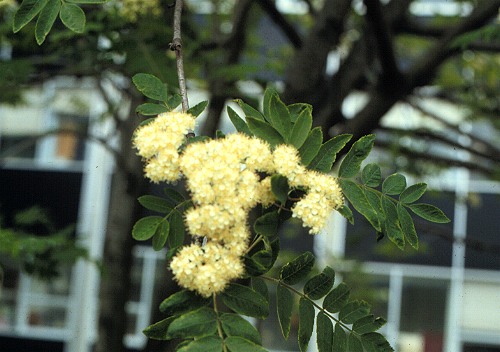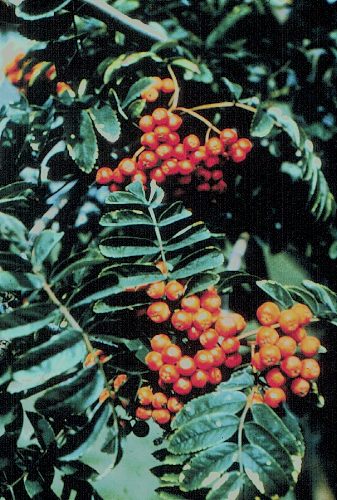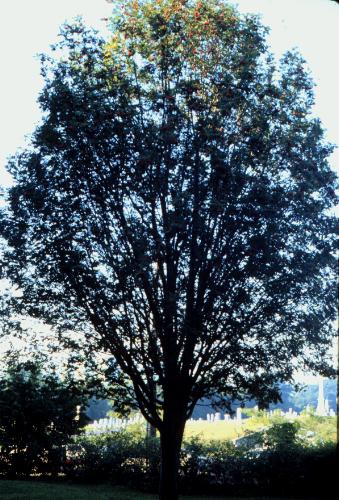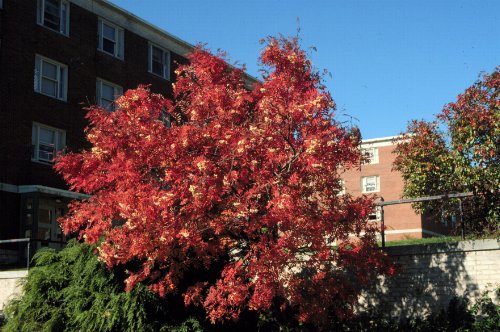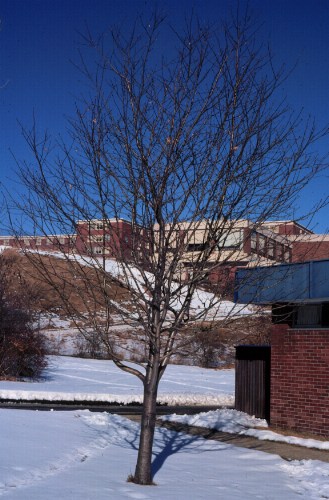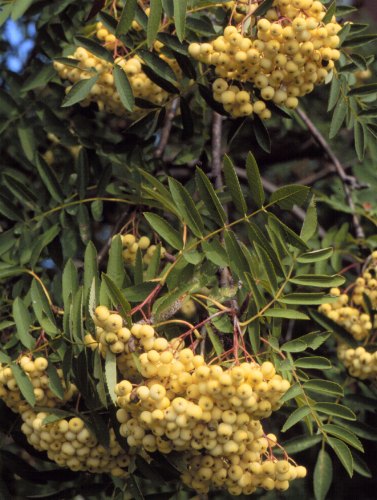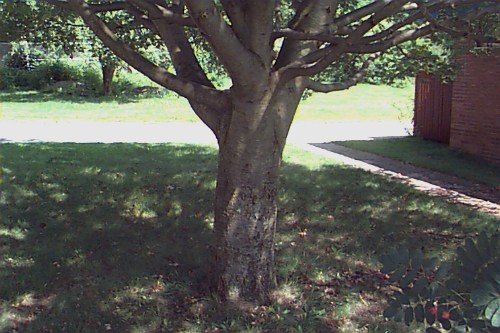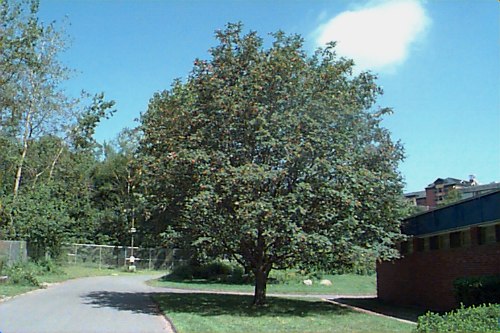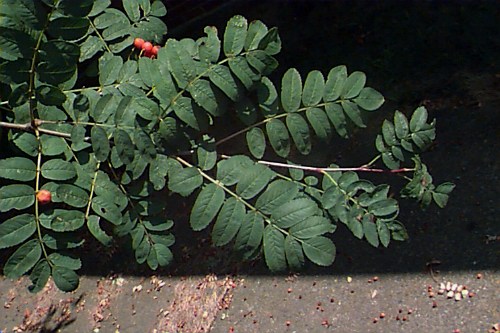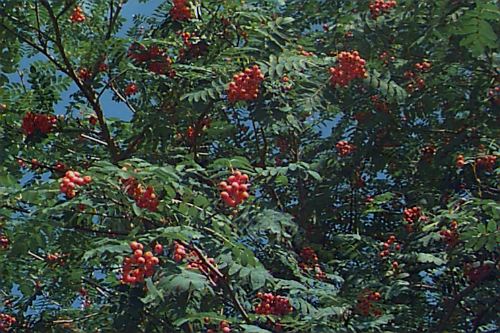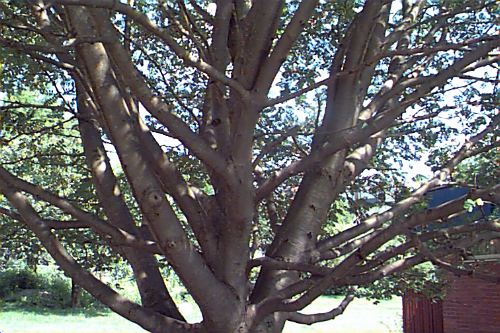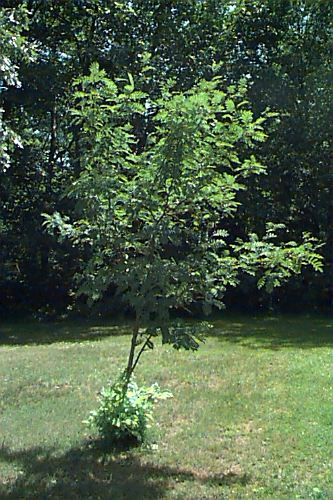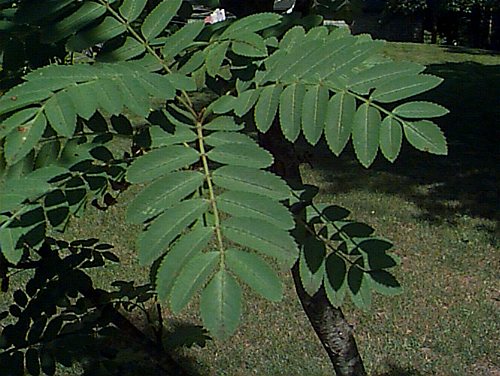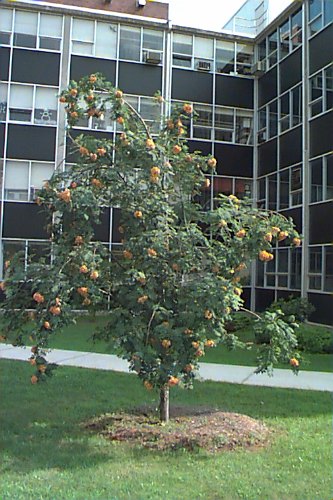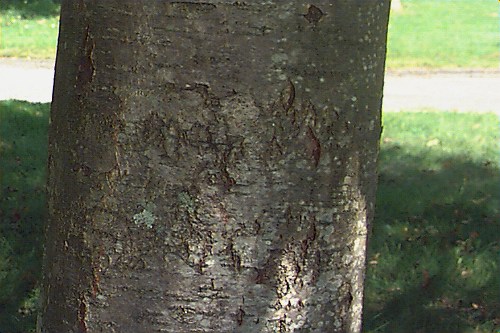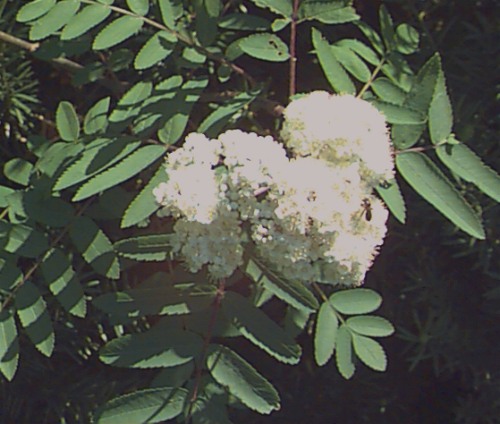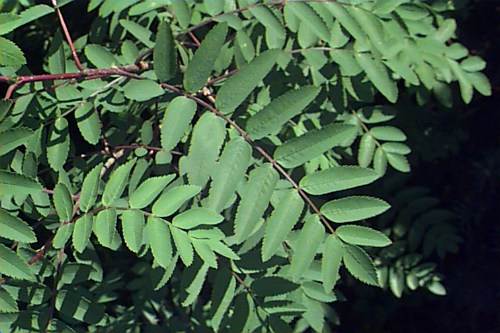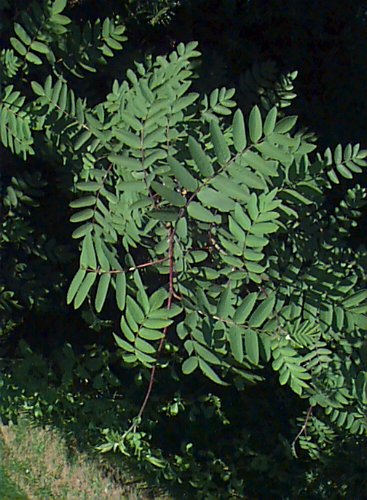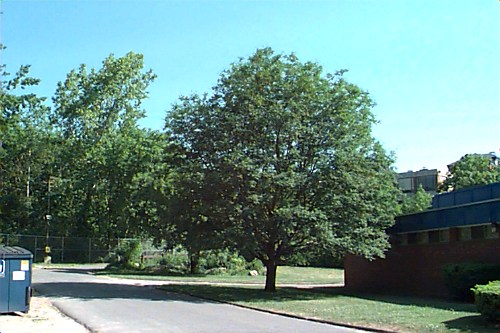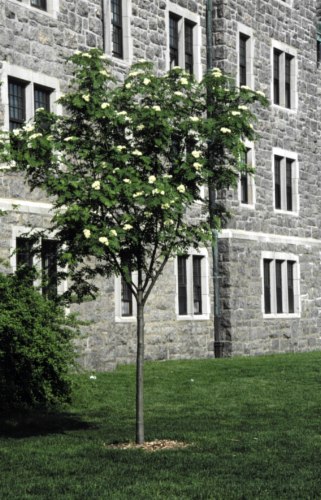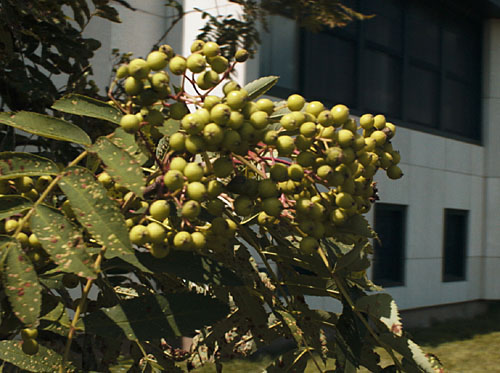Sorbus aucuparia
European Mountainash, Common Mountainash
Rosaceae
ExpandHabitat
- native to northern Europe and Asia
- zone 3
Habit and Form
- a small to medium-sized, deciduous tree
- typically 20' to 40' tall
- shape is ovate to rounded
- branching is strongly upright and spreading
- main trunk is often short, becoming very multi-branched
Summer Foliage
- leaves are alternately arranged
- pinnately compound
- 5" to 9" long
- 9 to 15 leaflets is most common
- leaflets are .75" to 2.5" long with a pointed oval shape
- margins of leaflets are serrated toward the tips
- dark green above, frosty green below
Autumn Foliage
- leaves change from green to yellow to orange to somewhat reddish
- can be showy or disappointing
Flowers
- blooms in May
- rounded, flat-topped clusters
- white color
- malodorous
- individual flowers only 0.33" across.
- relatively showy, but not spectacular
Fruit
- small, orange-red fruits
- 0.25" to 0.38" diameter
- born in terminal clusters that ripen in late August and September
- fruit is quite attractive
- birds like to eat the fruit
Bark
- color is light grayish brown
- generally smooth, but somewhat roughened on older trunks
- relatively attractive
Culture
- prefers cool to cold climates best
- likes well-drained, loamy acidic soils
- avoid high pH soils
- avoid hot, dry locations
- avoid compacted soils and pollution
- full sun
Landscape Uses
- excellent for effect in fruit
- good performer in cold climates
- as a smaller shade tree
- fruits attract birds
- specimen
Liabilities
- stress predisposes the plant to disease and insect problems
- very susceptible to borers
- frequently develops fire blight
- other insect and disease pests include cankers, rusts, aphids, sawflies, and scales
- often short-lived in the landscape
ID Features
- very large terminal buds
- smooth bark
- short main trunk dividing into multiple trunks
- upright oval branching
- pinnately compound leaves
- a dark band is beneath each leaf scar
- white flowers in flat clusters
- orange red fruit in terminal clusters
Propagation
- by seed
- cultivars generally grafted
Cultivars/Varieties
'Asplenifolia' - A selection for more incised leaflets, this plant does not differ markedly from the species.
'Fastigiata' - This is an upright form with coarse, ascending branches. It produces red fruit and dark green foliage
'Michred' (Cardinal Royal™) - This is perhaps the most common commercial selection. A introduction out of Michigan, the plant is a vigorous symmetrical grower to 30' tall and 20' wide. The habit is upright-oval and the plant bears profuse red fruit amidst glossy green foliage (silvery beneath).
'Pendula' - A novelty form that is not widely available, this plant has drooping branches that are not regular or very graceful. It grows to 20' tall and fruits well.
'Xanthocarpa' -Notable for its yellow-orange fruit, this selection is otherwise similar to the species. 'Brilliant Yellow' is a named selection with yellow fruit on a oval tree 30' tall with a spread of 20'.
